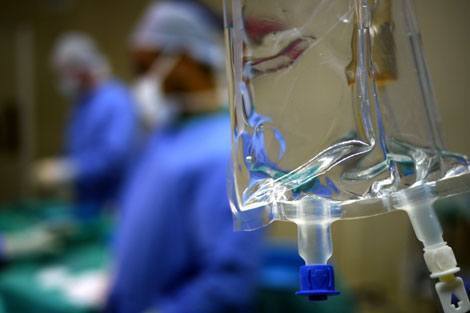For immediate release: Wednesday, September 18, 2013
Boston, MA — Reducing hospital readmission rates is an important clinical and policy priority but whether those rates really measure the quality of hospital care isn’t clear. In a new study, researchers from Harvard School of Public Health (HSPH) found strong evidence of a relationship between surgical readmission rates and quality of surgical care. The finding provides an opportunity for policymakers to improve surgical quality and decrease readmission costs and supports plans by the Centers for Medicare and Medicaid Services to expand its readmission penalty program to include surgical procedures.
“Our findings suggest that focusing on surgical readmissions may be a smart policy approach to both improving care and reducing unnecessary spending,” said Ashish Jha, professor of health policy at HSPH and the study’s senior author.
The study appears in the Sept. 19, 2013 issue of the New England Journal of Medicine.
Much of the policy focus to date has been on reducing readmissions after hospitalization for medical conditions, such as heart failure and pneumonia, but this approach has been controversial. Readmissions for medical conditions are primarily driven by how sick the patients are and whether they live in poor or better-off communities; the link between hospital quality and readmissions is less clear. The authors postulated that surgical care may be different—and sought to find out if there was a relationship between readmission rates after surgery and the quality of surgical care in that hospital.
The researchers calculated 30-day readmission rates using Medicare data for six major surgical procedures: coronary-artery bypass grafting, pulmonary lobectomy, endovascular repair of abdominal aortic aneurysm, open repair of abdominal aortic aneurysm, colectomy, and hip replacement. The study cohort was composed of 479,471 discharged patients from 3,004 hospitals in the U.S. who underwent one of the six procedures.
The results showed that approximately one in seven patients discharged was readmitted within 30 days. Hospitals with the best performance on two well-established measures of hospital surgical quality, surgical volume and 30-day mortality rates, had much lower readmission rates than other hospitals. For example, hospitals in the highest quartile for surgical volume had a significantly lower readmission rate than hospitals in the lowest quartile (12.7% vs. 16.8%). Hospitals with the lowest surgical mortality rates had a significantly lower readmission rate than hospitals with the highest mortality rates (13.3% vs. 14.2%).
The findings provide evidence of a strong relationship between surgical quality and readmissions and could encourage hospitals to focus on making surgical care better. “The findings are good news for policy makers and the public health community as a way to reduce health care spending and improve outcomes for surgical patients,” said Thomas Tsai, the lead author of the study. Tsai is a post-doctoral fellow at HSPH and a surgical resident at Brigham and Women’s Hospital.
Tsai was supported by the National Cancer Institute-funded Program in Cancer Outcomes Research Training at the Massachusetts General Hospital Institute for Technology Assessment.
“Variation in Surgical-Readmission Rates and Quality of Hospital Care,” Thomas C. Tsai, Karen E. Joynt, E. John Orav, Atul A. Gawande, Ashish K. Jha, NEJM, 369:1134-1142, September 19, 2013
For more information:
Todd Datz
617.432.8413
tdatz@hsph.harvard.edu
photo: iStockphoto.com
Visit the HSPH website for the latest news, press releases and multimedia offerings.
###
Harvard School of Public Health brings together dedicated experts from many disciplines to educate new generations of global health leaders and produce powerful ideas that improve the lives and health of people everywhere. As a community of leading scientists, educators, and students, we work together to take innovative ideas from the laboratory and the classroom to people’s lives—not only making scientific breakthroughs, but also working to change individual behaviors, public policies, and health care practices. Each year, more than 400 faculty members at HSPH teach 1,000-plus full-time students from around the world and train thousands more through online and executive education courses. Founded in 1913 as the Harvard-MIT School of Health Officers, the School is recognized as America’s first professional training program in public health. For more information, visit www.hsph.harvard.edu.
HSPH on Twitter: http://twitter.com/HarvardHSPH
HSPH on Facebook: http://www.facebook.com/harvardpublichealth
HSPH on You Tube: https://www.youtube.com/user/HarvardPublicHealth
HSPH home page: https://www.hsph.harvard.edu
